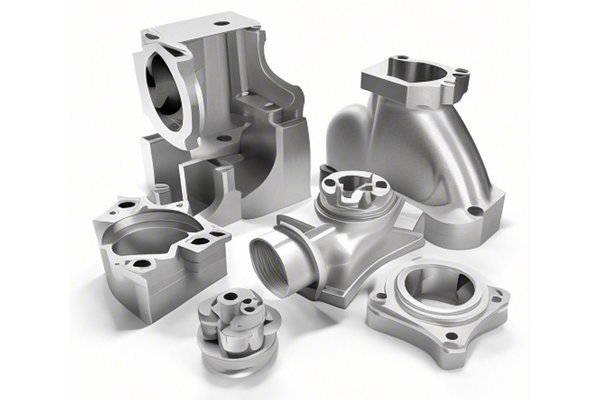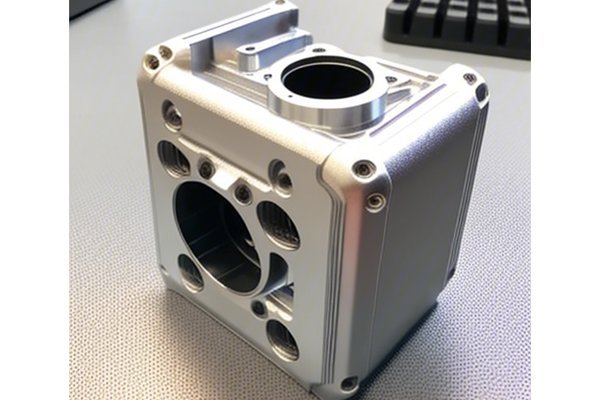Did you know that the global market for polymer materials is projected to reach $650 billion by 2025? As industries evolve with technology, the demand for high-performance materials capable of meeting complex needs has never been higher. One of the catalysts for this transformation is CNC machining, a technological marvel that offers unparalleled precision and flexibility in manufacturing. This blog will dive deep into how CNC (Computer Numerical Control) machining not only enhances the properties of existing polymers but also contributes to the innovation needed to develop new and advanced polymer materials.
What is CNC Machining?
Before we delve into how CNC machining fosters polymer innovation, let’s clarify what CNC machining is. CNC machining is an automated process of controlling machine tools with a computer. This technology allows for optimal precision, repeatability, and the ability to create complex geometries, which are often essential in advanced materials engineering.
Unlike traditional machining, where operators physically manipulate machines, CNC allows for a pre-programmed sequence that can result in vastly intricate and precise components. This characteristic is particularly pivotal for processing polymers, which can be sensitive due to their properties.
The Role of CNC Machining in Polymer Development
CNC machining facilitates the development and refinement of polymer materials in several notable ways:
Advanced Applications Driven by Polymer Innovations
With a foundational understanding of how CNC machining supports polymer development, let’s explore specific advanced applications where innovative polymers are reshaping industries:
The aerospace industry demands materials that are lightweight, strong, and capable of withstanding extreme conditions. Innovative polymers such as advanced composites are developed through CNC machining to meet these challenges. CNC machining enables the creation of parts that are not only lightweight but also aerodynamically designed, enhancing fuel efficiency.
In medical applications, polymers are used for devices like implantable components, prosthetics, and surgical tools. Precision is paramount in these applications to ensure safety and efficacy. CNC machining allows for the assembly of complex geometries and the incorporation of features like microfluidic channels, which are increasingly vital in the development of diagnostic devices.
In the automotive sector, engineers turn to advanced polymers for components that provide significant weight reduction without sacrificing strength. CNC machining enables the manufacture of intricate designs for dashboard assemblies, custom brackets, and housings, optimizing both the structural and aesthetic qualities of parts.
The consumer electronics industry relies heavily on precision-engineered components made from innovative polymers. From casings to internal structures, CNC machining allows manufacturers to create thinner and lighter products, which enhances user experience without compromising durability.
In robotics, lightweight yet durable polymer materials are crucial for both structural and functional elements. CNC machining facilitates the integration of moving parts with tight tolerances, enabling robots to navigate their environments effectively and perform intricate tasks.
Solutions to Common Challenges in Polymer CNC Machining
Problem: Polymers can be sensitive to heat, which may distort the material during machining.

Solution: Utilize coolant systems during machining operations. Implementing air or liquid coolant can dissipate heat effectively, preventing deformation and ensuring dimensional accuracy.
Problem: Polymers can cause rapid tool wear, especially if machining at high speeds.
Solution: Choose appropriate tooling materials, such as carbide or diamond-coated tools, designed for polymer machining. Regular monitoring and maintenance of tools can enhance their lifespan, ensuring consistent performance.
Problem: Achieving a high-quality surface finish in polymers can be tricky due to material characteristics.
Solution: Optimize machining parameters: slow down feed rates, adjust spindle speeds, and reconsider tool geometries to improve surface quality. Experimenting with different finishing techniques can also yield better results.
Problem: Polymers can exhibit dimensional changes upon cooling or due to moisture absorption.
Solution: Utilize stress-relief techniques post-machining, such as annealing, to stabilize dimensions. Additionally, proper selection and conditioning of the polymer material can prevent such issues.
Case Studies
Case Study 1: Aerospace Industry
A leading aerospace manufacturer successfully implemented CNC machining to produce lightweight polymer composite components. By optimizing cutting tools, lubrication strategies, and machining parameters, they achieved lower machining times and reduced costs while maintaining stringent tolerances. This innovation led to a 25% weight reduction in several aircraft components, directly impacting fuel efficiency.
Case Study 2: Medical Devices
In a collaboration with a medical solutions provider, a CNC machining company developed a series of highly intricate surgical tools from innovative polymers. By utilizing advanced CNC technology, they designed tools with micro-features that improved precision. The result was a new generation of surgical tools that reduced recovery time for patients owing to fewer invasive procedures.
Future Trends in CNC Machining and Polymer Development
As we continue to pivot toward an era dominated by technology and innovation, several trends are emerging in CNC machining as applied to polymer materials:
Artificial Intelligence and machine learning can further enhance CNC machining abilities by predicting tool wear, optimizing machining speeds, and even adjusting processes in real-time for enhanced results.
Researchers are continuously exploring new polymer blends and composites that exhibit improved characteristics. CNC machining plays a vital role in developing, testing, and refining these materials for real-world applications.
Although traditionally viewed as separate processes, CNC machining and 3D printing will increasingly converge. Innovations will allow for more customized parts to be fabricated efficiently using combined techniques.
CNC machining is undeniably a cornerstone in the advancement of polymer materials, driving innovations across various industries. With precise processing, complex geometry capabilities, and material versatility, CNC machining enables the creation of advanced polymers tailored for unique applications.
In a world increasingly reliant on high-performance materials, understanding the significance of CNC machining becomes paramount. Reflecting on the techniques and solutions discussed throughout this blog, it is clear that the future of polymers lies intricately woven with the capabilities offered by CNC machining.
As you contemplate the integral role of CNC machining in material innovation, remember that the next generation of polymer applications—possible solutions to real-world challenges—await your creativity and commitment to pioneering advancements. Embrace this transformative technology, and consider the vast opportunities it presents not only in polymer development but also in shaping the future of countless industries.






